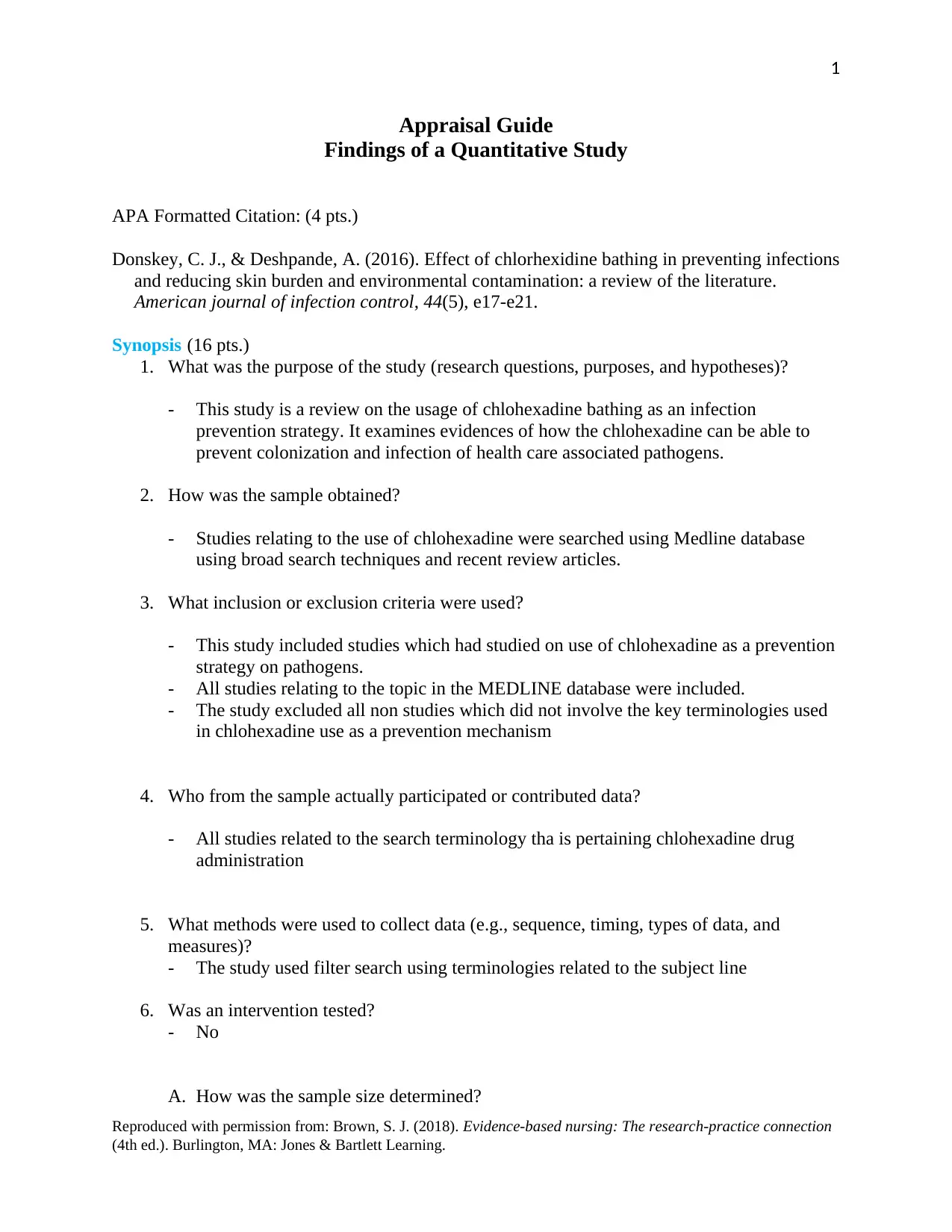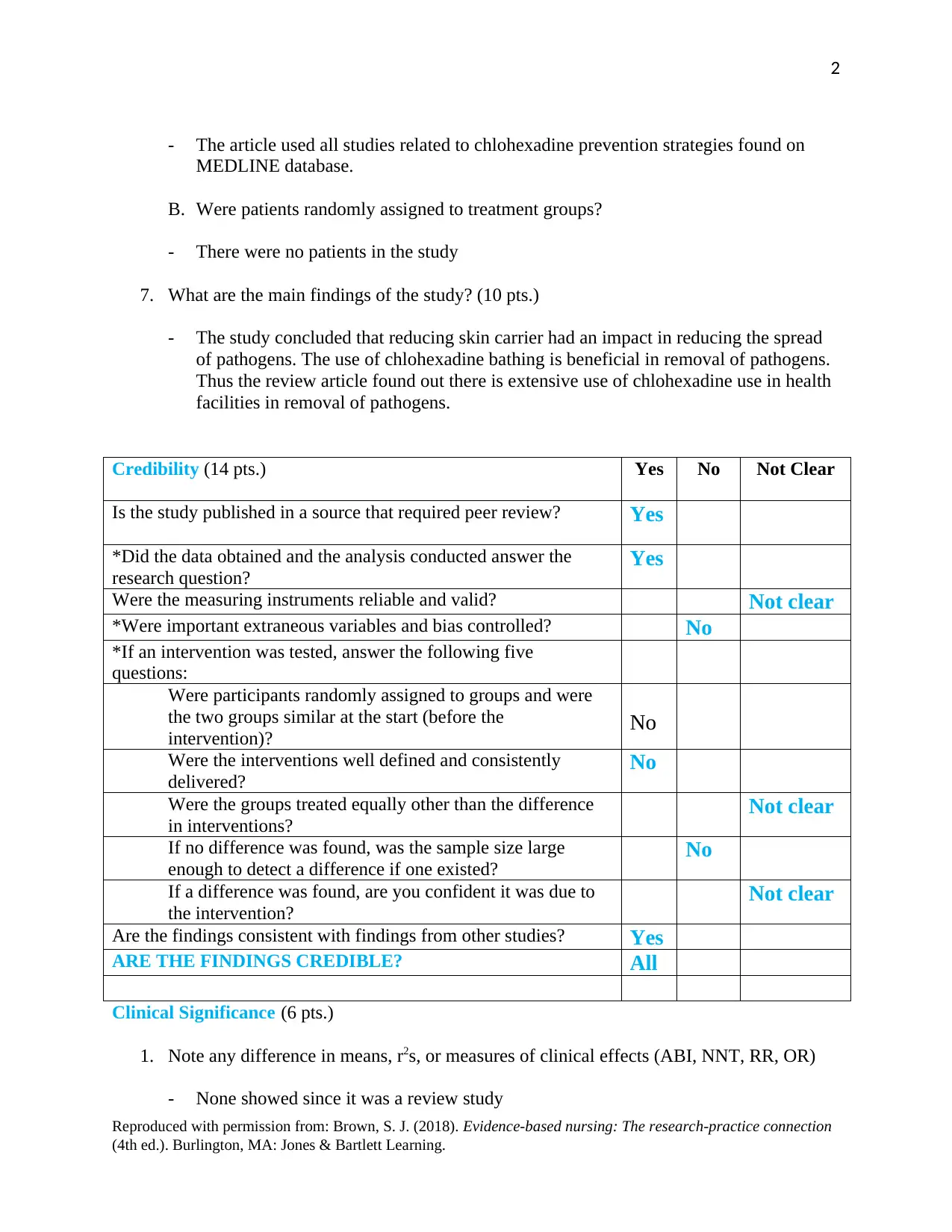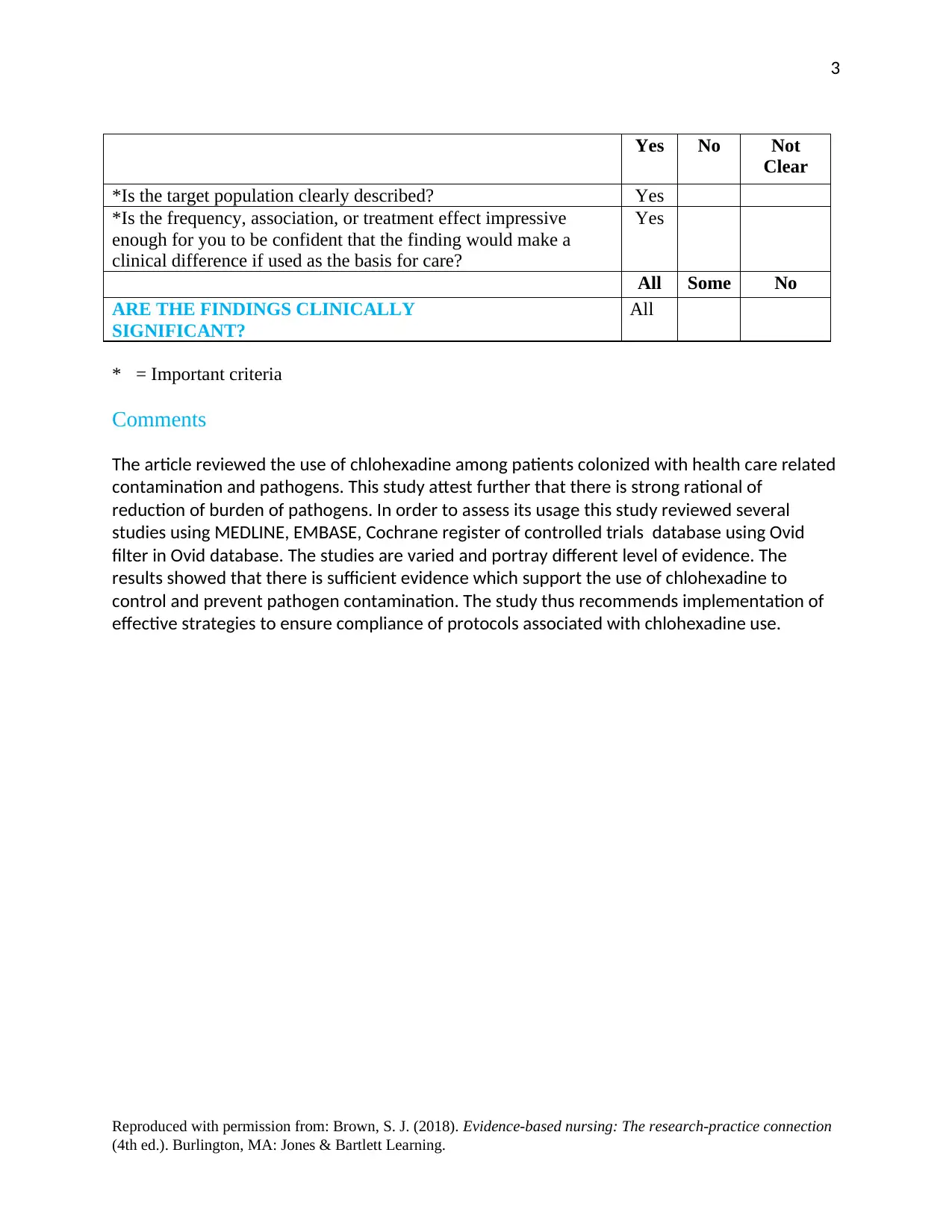Quantitative Study Appraisal: Findings and Credibility Analysis
VerifiedAdded on 2020/05/16
|3
|790
|125
Homework Assignment
AI Summary
This assignment provides a comprehensive appraisal of a quantitative study, focusing on the use of chlorhexidine bathing as an infection prevention strategy. The study, a review of literature, examines the effectiveness of chlorhexidine in preventing healthcare-associated infections and reducing skin contamination. The appraisal evaluates the study's purpose, methodology, sample selection, data collection methods, and findings. Key aspects include assessing the study's credibility, including peer review, data analysis, and control of variables, along with an evaluation of the clinical significance of the findings. The analysis considers the study's conclusions regarding the impact of chlorhexidine in reducing pathogen spread and its recommendations for implementing effective strategies to ensure compliance with protocols. This study is a valuable resource for understanding evidence-based practices in healthcare settings, particularly in infection control.
1 out of 3










![[object Object]](/_next/static/media/star-bottom.7253800d.svg)